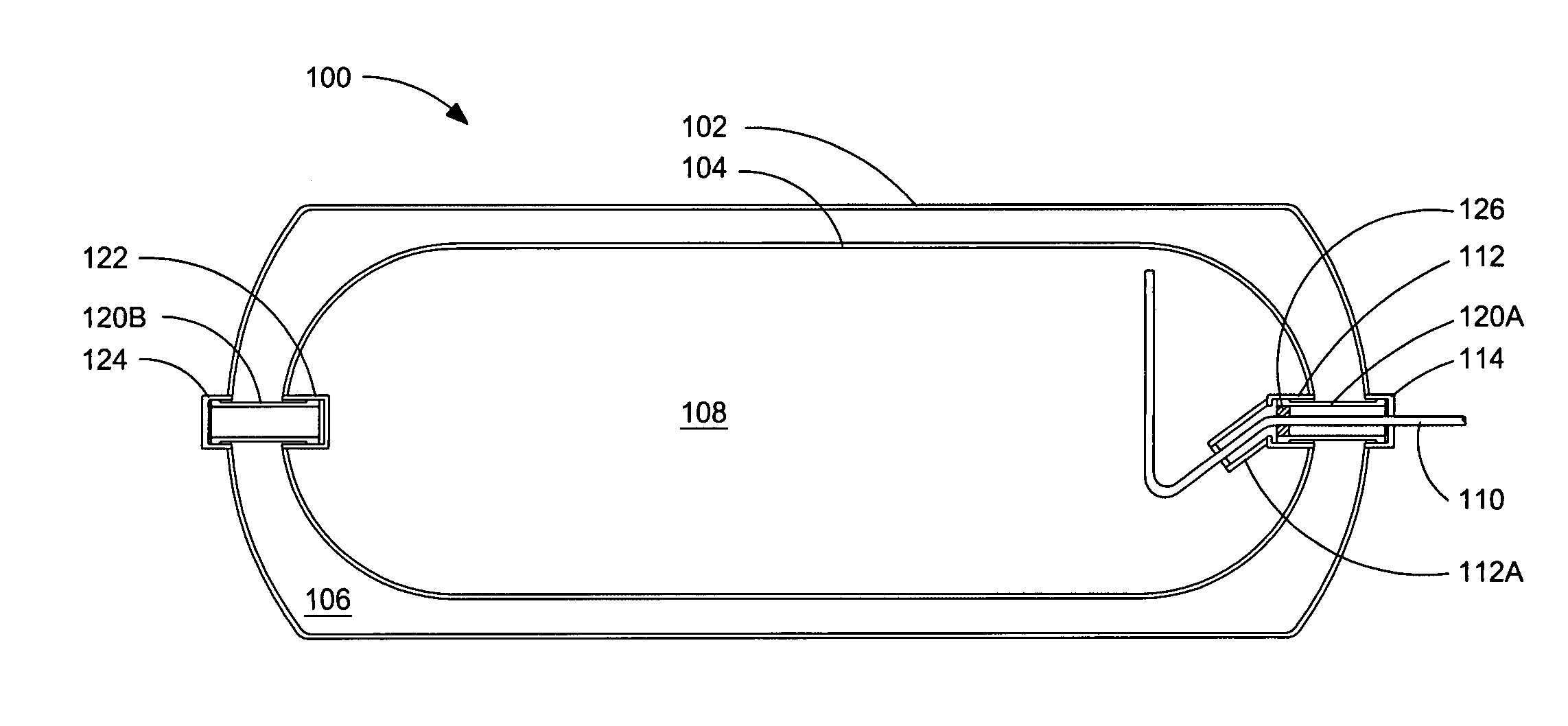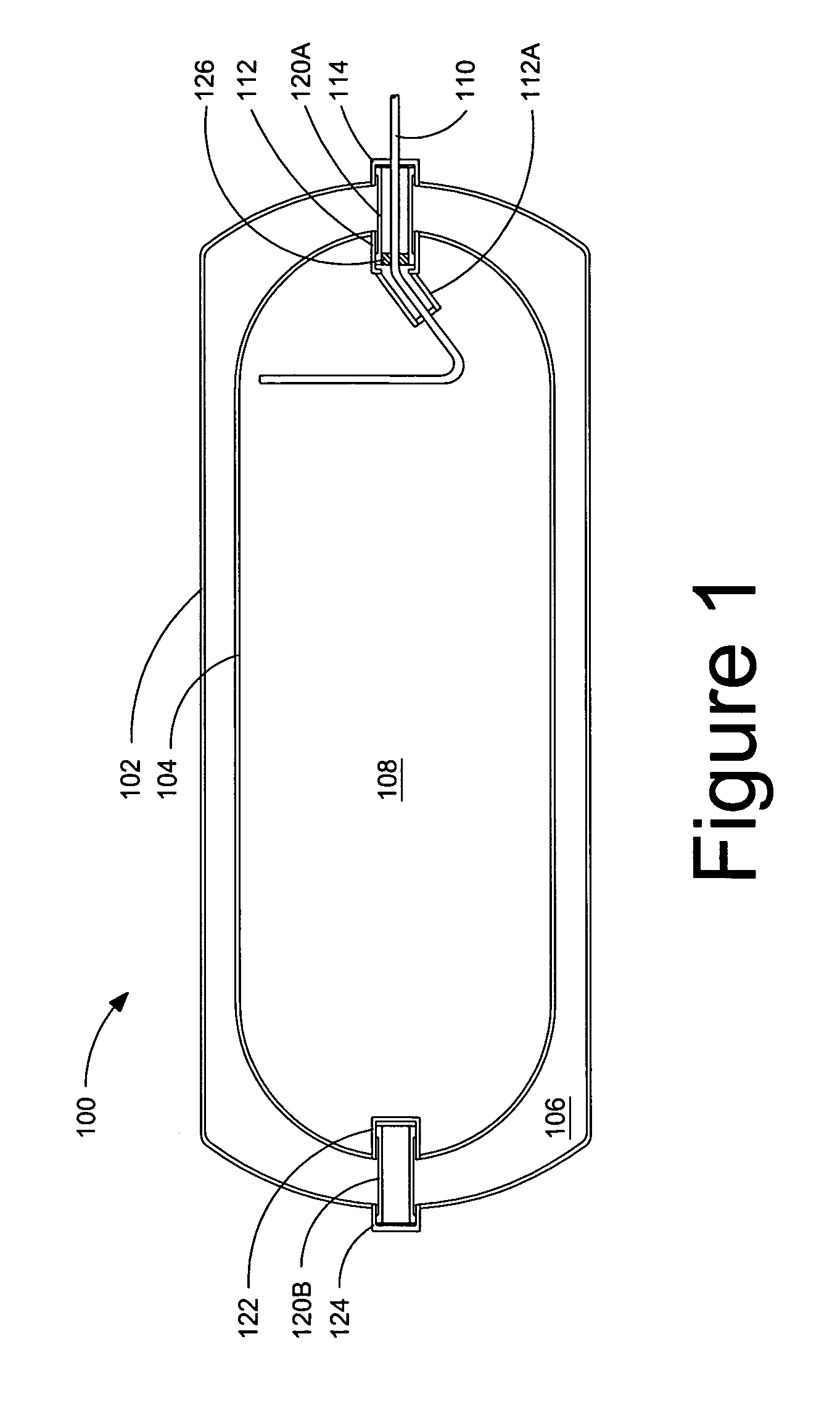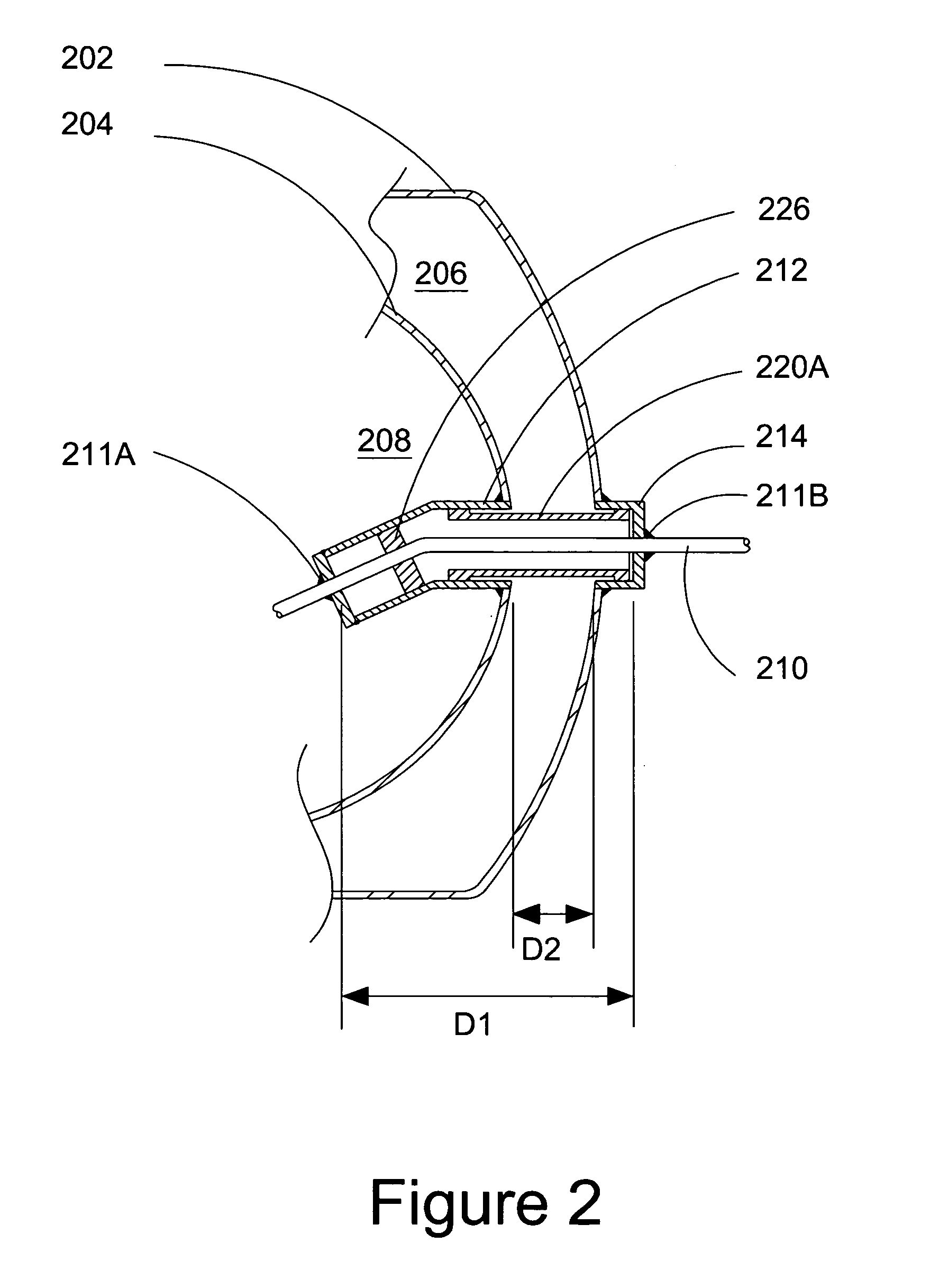Container for holding a cryogenic fluid
a technology for cryogenic fluids and containers, applied in the direction of containers, transportation and packaging, discharging methods, etc., can solve the problem of too much heat leakage, achieve the effect of reducing radiant and convective heat transfer, reducing heat leakage into the cryogenic space, and reducing thermal conductivity
- Summary
- Abstract
- Description
- Claims
- Application Information
AI Technical Summary
Benefits of technology
Problems solved by technology
Method used
Image
Examples
Embodiment Construction
)
[0049]FIG. 1 is a cross-sectional view of a heat insulated double-walled container 100 for holding a cryogenic fluid. Outer vessel 102 surrounds, and is spaced apart from, inner vessel 104, defining evacuatable space 106 therebetween. Inner vessel 104 also defines the general boundaries of cryogen space 108. In the illustrated embodiment, inner vessel 104 has a cylindrical body with dome-shaped ends. This shape conforms with the general shape of conventional fuel tanks attached to heavy-duty trucks. In the present container for holding a cryogenic fluid, the support system for inner vessel 104 and other shapes could be employed for the inner vessel with the same support system. For example, other shapes such as a sphere or an elongated vessel with an elliptical cross-section can be dictated by the application and the space available for mounting the container. For strength reasons, rounded shapes are preferred compared to shapes with sharp or square corners.
[0050]As shown in FIG. 1...
PUM
| Property | Measurement | Unit |
|---|---|---|
| cure temperature | aaaaa | aaaaa |
| temperatures | aaaaa | aaaaa |
| shape | aaaaa | aaaaa |
Abstract
Description
Claims
Application Information
 Login to View More
Login to View More - R&D
- Intellectual Property
- Life Sciences
- Materials
- Tech Scout
- Unparalleled Data Quality
- Higher Quality Content
- 60% Fewer Hallucinations
Browse by: Latest US Patents, China's latest patents, Technical Efficacy Thesaurus, Application Domain, Technology Topic, Popular Technical Reports.
© 2025 PatSnap. All rights reserved.Legal|Privacy policy|Modern Slavery Act Transparency Statement|Sitemap|About US| Contact US: help@patsnap.com



